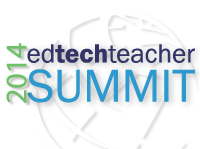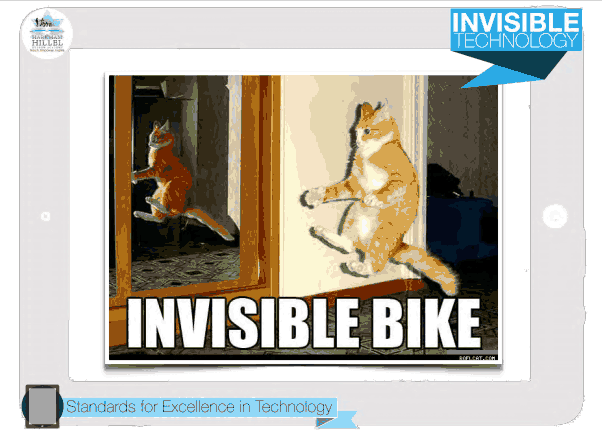Rabbi Michael Cohen is the Director of Educational Technology at Harkham Hillel Hebrew Academy who earned street cred with his students by doing a kick-flip on a skate board. His theory is that we, as teachers, are here to inspire and motivate our students, to help them find what skills they have, and to let them shine.
Defining Invisible
It doesn’t mean that something isn’t there. It means that it isn’t seen. It isn’t that technology isn’t there; it’s that it isn’t the focal point. If you start forcing invisibility, then it just starts to look silly.
Significant learning experiences are what we want, and how we get there doesn’t matter. If a student can articulate their understanding, then that’s the ultimate goal. We need to focus on where we are trying to go and then ask how to get there. This then allows us to focus less on the technology and more on the learning experiences.
Revolutionary Inventions
They aren’t about the inventions. They are about the revolution. This is the main point behind Michael’s theories. Think about the pencil, challenges Michael. At one point, it was a revolutionary invention that allowed us to capture learning. We tend to value tools, Michael continues, but we need to focus instead on the product that can be achieved through it.
We need to always focus on the learning objective in order to be successful.
“Educate a child, according to their way.”
In other words, we can support students now in a way that was never before possible through the technology. Because of the tools, we as teachers can connect to students and support them in multiple ways.
At the essence of technology is sharing and communicating. Think about the pencil, the Gutenberg press, and now iPads – we can now share our word globally.
“The bad of this colossal invention is out shined by the good.” – Mark Twain
Mobile Massive Ability to Connect
All of the technologies are about how far the experience can be extended – regardless of the device. Students are genuinely impacted by becoming connected. Even decades ago, as Michael illustrates with the image from Alan Kay, students were connecting and learning together.
We aren’t just “going digital.” The goal is that we are creating. We don’t want to lose skills, we want to enhance and share them.
Student Example – 8th Grade Revolutionary War
Michael found a wireframe shelf to create an iPad stand and then supported students in using construction paper to create a stop motion animation about the Revolutionary War. The students were challenged to research a single piece of the war, share their creation, and then curate into a single iBook. Not only do students get in-depth in a specific topic but also a general understanding of the overall topic.
Tools with Purpose for People with Vision
The root of failure in using robust technology is not that there isn’t a purpose or vision, but that teachers and students don’t map out how the technology will support the purpose or vision. The approach is to figure out how technology, and iPads, can be used as a window to capture, curate, and share our learning. The goal is to use it to express learning in a special way.
The technology is most powerful when used to create a shared experience. To prove this, Michael tells the story about taking his 7th graders on a trip to the Olympic National Forest. They took pictures and wrote in journals (with pencils). At the end of the trip, they curated their experiences into a shared Book Creator. However, they considered it a digital experience and not an “iPad project.”
iPads can provide a window to the world – but don’t let it constrain your perspective #ettsummit #invisipad pic.twitter.com/OyG1Ta6qQn
— Katrina Kennett (@katrinakennett) July 30, 2014
Creating Significant Learning Experiences
Michael progressed to talking about the evolution of mass communication from Pony Express to Stagecoach to truck to Email. The point that he’s making is that we don’t want to focus on the technologies, we want to look at the shared experience.
The goal is a significant learning experience. Students are excellent at determination and completing technology challenges; however, they struggle with process and time management. To make this more seamless and to open collaboration, Michael uses Technology Integration Rubrics as a universal language to support students across all disciplines. However, it’s not about technology; it’s about how to connect.
- Organizing & Planning
- Collaboration, Cooperation, and Participation
- Problem-solving & Critical Thinking
- Communicating Essential Ideas to an Audience
- Reflection & Revision
This concept of a global community, sharing ideas, and leveraging technology is about supporting each other to make ideas into tangible experiences and outcomes for the students that we teach.



